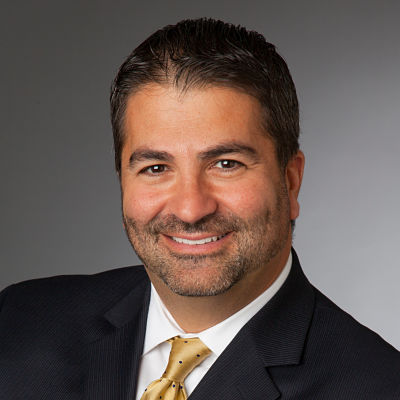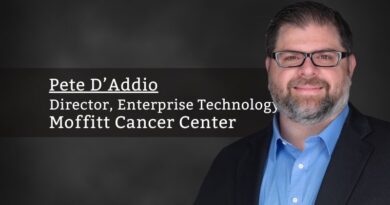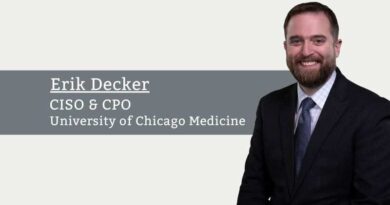Technology innovation provides a road map for consumers’ end-to-end healthcare journey
By Joseph Cacchione, MD, FACC, Executive Vice President, Clinical & Network Services, Ascension
There is no question that healthcare has been lagging in technology innovation. However, consumer demand is driving transformation, pushing us toward implementation of more personalized, higher quality and efficient processes. Consumers have come to expect a seamless, transparent and convenient “on-demand” healthcare experience, while clinicians are searching for new tools to optimize their workflows and better predict and manage patient care.
Innovation is no longer an industry buzzword; it’s now a necessity.
To bridge the divide between what consumers and clinicians want, and what healthcare organizations have traditionally fallen short in providing, we must commit to allocating resources to innovate and implement technology-enabled products. To be successful, these advances must aid consumers in every step of their healthcare journey – from learning about symptoms to scheduling an appointment online, to an omni-channel approach to communication and bill payment. Simply stated, we need to harness the power of technology in a way that other industry segments have already mastered – and then do more.
This includes developing a suite of solutions that organizes consumer (and related) data to deliver on a personalization engine that anticipates needs, customizes digital and care experiences, and provides ongoing communication around what customers want most.
To address this challenge head on, Ascension has embarked on a “Mission-inspired Transformation” to change how we better leverage technology to benefit both patients and caregivers. Rather than creating isolated solutions for singular needs, we are adopting a more agile, modern approach to software and applications development. The evolutions of our clinical, business and technology approach are focused on a central objective: delivering compassionate, personalized care, when and where it’s needed, to people in every community we serve.
Our intention is to unlock and harvest the power of data-driven insights to help us better serve patients today and to anticipate their needs in the future. Through the people-centered innovation of new platforms and services, we will create opportunities for more frequent, customized and meaningful connections with those we serve. These improvements are all designed to maximize our caregivers’ ability to focus on patient needs; innovation driven by efficiency led by the goal of improving each consumer’s healthcare journey from start to finish.
In the future, all our systems will be able to both share data across a longitudinal health record, improving care at the point of delivery, and contribute data to enterprise analytic platforms.
Every day, our health system produces millions of data points from electronic health records, to patient outcomes to clinical trends and beyond. On top of that, new technology-driven service models like virtual care, interactive pharmacy kiosks and the use of artificial intelligence are quickly entering mainstream usage in the healthcare landscape, adding more and more data points. When used wisely, these advances have been shown to dramatically increase efficiency, lower costs and improve patient satisfaction.
The real opportunity, however, is much greater than solely serving today’s needs. As we develop new technology and improve our operations, we must also advance the capabilities to turn that data into actionable insights to be more proactive in our approach to managing high-risk populations with unique needs. For example, a study by Pew Research Center as of early 2019 found 95 percent of adults living in households earning less than $30,000 a year have a cell phone. This creates an exceptional opportunity for us to connect with vulnerable populations.
One way Ascension is doing this is through the collection of social determinants of health data using an electronic assessment at the point of care. This screening allows clinicians to identify economic and social needs and then connect patients to resources and interventions that close gaps not already filled through the provision of healthcare services. This includes everything from transportation to housing to food sources.
We are also augmenting our data science capabilities to make better inferences and care predictions based on available data. In the future, all our systems will be able to both share data across a longitudinal health record, improving care at the point of delivery, and contribute data to enterprise analytic platforms. This will create opportunities for us to uncover insights that help guide optimal patient care and foster ongoing operational improvements.
Ascension Medical Group – our national medical group composed of physicians and advanced practice providers – has been working to better understand the needs of the communities we serve and aligning the right care models for meeting the evolving needs of individuals. The implementation of virtual urgent care across our national health organization is one output from this work and part of our “digital front door” strategy.
According to Business Insider, interest among consumers for this type of convenient access to care is on the rise, with expected annual growth rates from 27-32 percent until 2025. As telemedicine grows in popularity, the consumer benefits are apparent — saving time and money when needs can be met through a virtual visit. This approach allows patients to have reliable access to care at a price that is both affordable and consistent.
Two other virtually enabled care models that are being deployed across Ascension to include our Virtual Provider Offices, which offer convenient primary and specialty care for generally stable, minimally complex, or healthy populations, serving both acute and chronic illnesses; as well as Provider-to-Provider Consultations, which offer access to consultative services across geographies.
This is just the tip of the iceberg. Through persistent, thoughtful stewardship of resources, we believe that we can more efficiently deliver technology services on operationally reliable solution platforms, while generating the resources necessary to invest in capabilities that will support increased innovation.
We are optimistic and excited about the opportunities that this important work will yield. We remain committed to bringing to bear all technology advancements when it comes to giving clinicians time back with their patients, while creating exceptional care experiences and quality outcomes. Only then will we be able to fully carry out our mission of providing compassionate, personalized care for those we are privileged to serve, especially those who are most vulnerable.



